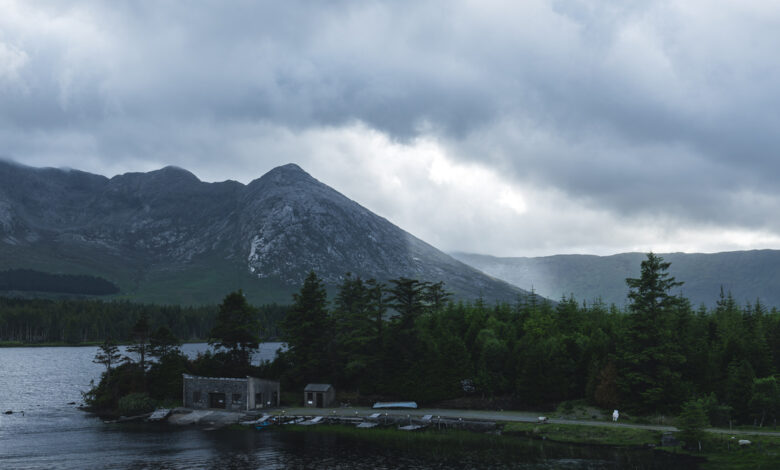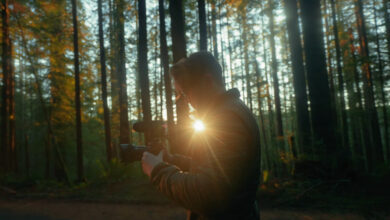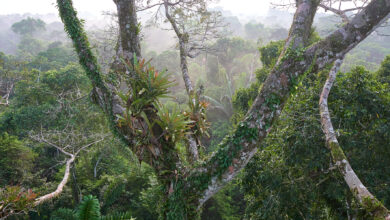The Importance of Flexibility in Landscape Photography

Landscape photography thrives on flexibility and spontaneity. The ever-changing nature of light and weather requires us to adapt quickly, abandon rigid plans and let the elements of nature guide our images. This flexible approach often results in the most compelling and memorable images, showcasing the dynamic connection of light, land and sky. Here’s why flexibility in your landscape photography is essential, along with some practical tips to help you embrace this mindset.
Let the Light Guide You
One of the most exciting aspects of landscape photography is the way light can transform a scene. Imagine you’re walking through a forested hillside when suddenly, a gap in the clouds causes rays of light to fall through the trees, illuminating a small grove with a golden glow. This unexpected moment stops you in your tracks, creating the perfect opportunity to capture the dramatic contrast between the bright foliage and the dark surroundings.
Instead of sticking to a pre-determined plan, embrace these moments. Set up your camera quickly and shoot in high-speed continuous mode to ensure you capture the fleeting light at its peak. The magic of these moments lies in their unpredictability and the flexibility that allows you to exploit the full potential of natural light.
The Power of Contrast
Contrast is a powerful element in photography, and natural light often provides the best opportunities to capture it. Consider a group of trees on a hillside that recently stopped me in my tracks, suddenly bathed in light from a cloud. The bright leaves stood out against the dark background, creating a dramatic effect. To capture it effectively, I had to position myself to take advantage of the changing light and shadow.
Be patient and wait for the right moment when the light is at its brightest. Use a narrow aperture to keep the entire scene in focus and adjust your exposure to ensure that the highlights don’t blow out while still retaining detail in the shadows. Shooting in raw gives you more flexibility in post-processing to balance exposure and enhance contrast even further.
Dynamic landscape photography
Mountains and lakes make dramatic backdrops for landscape photography, especially when combined with dynamic weather conditions. Consider a scene I recently encountered: a lake with mountains behind it, fast-moving clouds across the sky, and rays of light filtering through, illuminating distant light. This scene offers a great opportunity to capture the movement and mood of the landscape.
To ensure you don’t miss these fleeting moments, have your camera ready and set up. Use a tripod to steady your shot, especially if you’re using longer exposures to capture cloud movement. High-speed continuous shooting can help you capture the exact moment when the rays are at their most striking.
Some tips to maintain flexibility in your photography
Take it
Be willing to change your planned shots. If you see an unexpected opportunity, take it. The best shots often come from moments you don’t plan for, and if you stick to your plan, you’ll miss opportunities that arise around you. If you’re a photographer who likes to plan meticulously, this approach may take longer to get used to, but stick with it.
Light tracking
Pay attention to changing lighting conditions. The way light interacts with a landscape can change dramatically in a matter of moments, presenting unique opportunities. If you’re not prepared, they will come and go faster than you can get your camera out of your bag.
High speed continuous mode
Use high-speed continuous shooting mode to take a series of photos in quick succession. This increases your chances of getting the perfect shot when the light is just right. If you think the photo is perfect and then, when editing, wish you had waited a split second before pressing the shutter, then that lesson will cost you the perfect photo. So use this method now instead of learning the hard way.
Travel light
Bring only the gear you need to stay on the go and be ready to move quickly. A lightweight tripod, a couple of versatile lenses, and an extra battery pack should do the trick. It’s also helpful to skip the bag if possible, as the time it takes to unpack can make all the difference, as mentioned above.
Reconnaissance location
Get familiar with potential shooting locations in advance. Knowing the terrain and the best vantage points allows you to react quickly to changes in light. Watching the way the light plays across the terrain will help you predict what a potential shot might look like before you even take the shot.
Please be patient
Good lighting often requires patience. Wait for the perfect moment when the light, clouds and landscape line up to create an interesting scene. For many people this can be harder to do because they want the photo to be taken right away, but good photos take time, so be patient and then practice some more.
Using Filters
Neutral Density (ND) Filter can help manage exposure in bright conditions, allowing you to use slower shutter speeds to capture movement without overexposing your photos. Of course, as the title of this article suggests, be flexible, so if the lighting doesn’t require filters, don’t just use them; adapt and change as the conditions change, as this will make your photos better and save you frustration.
Adapt to conditions
Weather and lighting conditions can change rapidly. Adjust your shooting strategy to current conditions to make the most of the available light. Just because you captured a photo at a certain setting a few minutes ago doesn’t mean it will look the same a few minutes from now; light levels will change, so you need to adapt.
Conclusion
Being flexible in landscape photography means embracing it, adapting to changing light, and being ready to capture every moment as it happens. Rigid plans can limit your creativity and prevent you from capturing unexpected opportunities. By letting the light guide your shots and being ready for the perfect moment, you can create stunning, dynamic images that capture the beauty and drama of the world. Remember, the key to great landscape photography is not just planning, but having the flexibility to adapt and capture the fleeting magic of light and nature.
Have anything to add? Let me know in the comments below and let’s continue the conversation.




